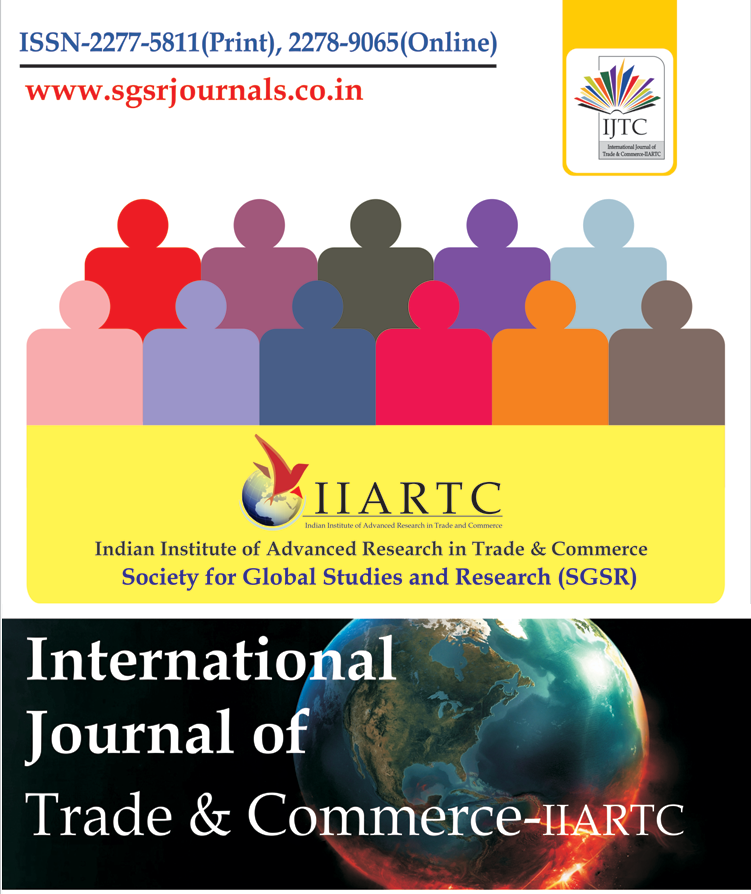Home ⇨ International Journal of Trade & Commerce-IIARTC

International Journal of Trade & Commerce-IIARTC
Impact Factor (IF):5.135 (COSMOS), IF:7.249 (ISRA), IF:3.721 (ISI)
ISSN:2277-5811 (P), ISSN:2278-9065 (O)
Frequency: Half Yearly
The Study of Performance Appraisal System of “Archies Ltd.”
Performance appraisal may be defined as a structured formal interaction between a subordinate and supervisor, that usually take the form of a periodic interview, in which the work performance of the subordinate is examined and discussed, with a view to identifying weakness and strengths as well as opportunities for improvement and skills development. In many organizations, not all appraisal results are used, either directly or indirectly, to determine reward outcomes. That is, the appraisal results are used to identify the better performing employees who should get the majority of available merit pay increases, bonuses and promotions. In this paper we tried how appraisal results are used to identify the power performers who may require some form of counseling, or in extreme cases, demotion, dismissal or decrease in pay.
Author:Kanika Maheshwari*
Abstract:Performance appraisal may be defined as a structured formal interaction between a subordinate and supervisor, that usually take the form of a periodic interview, in which the work performance of the subordinate is examined and discussed, with a view to identifying weakness and strengths as well as opportunities for improvement and skills development. In many organizations, not all appraisal results are used, either directly or indirectly, to determine reward outcomes. That is, the appraisal results are used to identify the better performing employees who should get the majority of available merit pay increases, bonuses and promotions. In this paper we tried how appraisal results are used to identify the power performers who may require some form of counseling, or in extreme cases, demotion, dismissal or decrease in pay.




